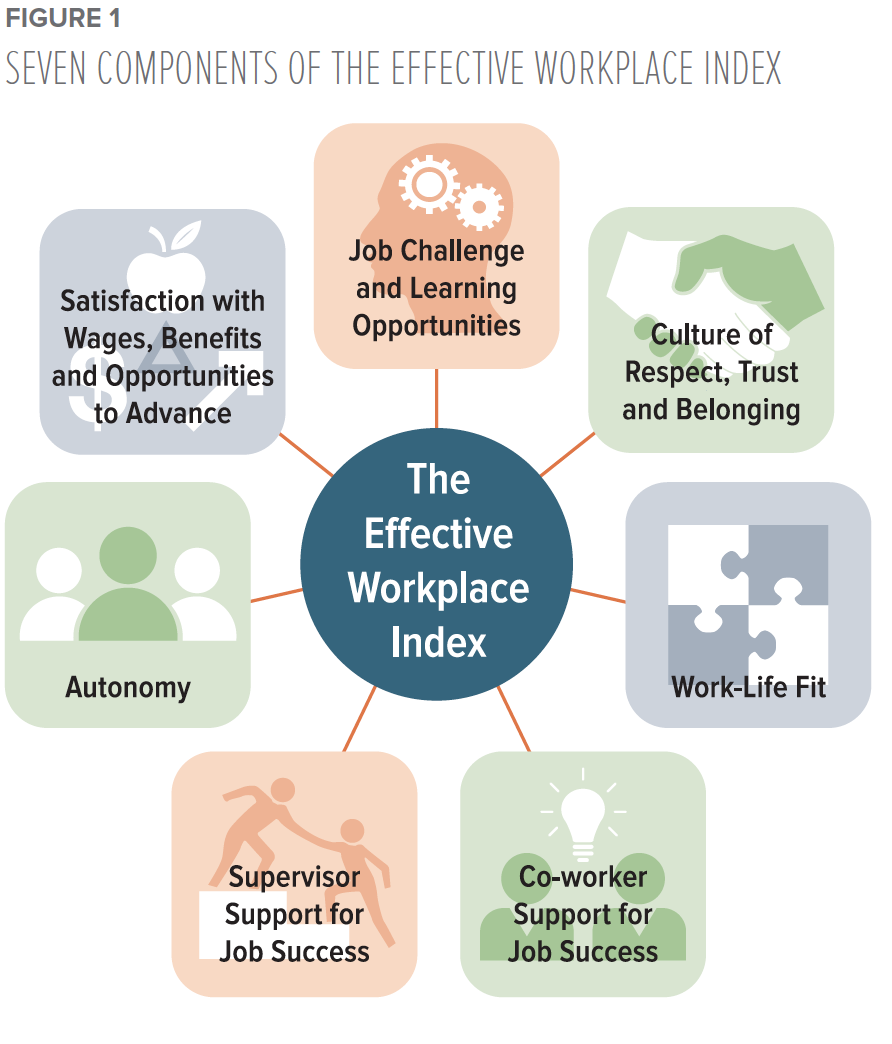
Is the time of the employee close at hand? After more than 20 years of downsizing, offshoring, buyouts, and innovation setting fire to traditional rules of the workplace, things are looking up for experienced, in-demand professionals. Many economic trends are on the uptick, and the unemployment rate continues to drop, from 8.2 percent in July 2012 to 4.3 percent in July 2017.
For workers with specialized skills, the job market is ripe with opportunity.
Top talent can be picky about where to work, and it isn’t necessarily about more pay. No, highly educated and skilled professionals are looking to work for companies where they feel motivated, engaged, and appreciated.
Employers must learn—quickly—what that means.
According to the Bureau of Labor Statistics, 25 percent of US employees quit their jobs in 2015.
The ability to recruit and retain top talent has become a valuable competitive advantage. Human capital, like equipment or products, translates to the bottom line. So why do established companies find it difficult to attract and keep the best and brightest? While many factors contribute to such turnover, research suggests one key reason workers leave jobs is because they aren’t sure they can trust their employer.
Recessions, globalization, and technological advances lead companies to downsize. But downsizing can exact a heavy emotional cost on workers—on those who lose their jobs and on others who remain.
These actions alone can breed distrust. It’s no wonder much of the workforce takes pause when choosing a place to spend their workdays.
According to Emily Bianchi, assistant professor of organization & management, trust and fairness impact recruiting and retention. She says employees must have confidence in employers to feel committed to their work and to the company.
“People are more likely to stay with employers they believe are trustworthy and fair,” she says. Indeed, a study from the Society for Human Resource Management 1 indicates that “a culture of respect, trust, and belonging” is a key component for creating an effective workplace.
The rules of engagement
Long ago, corporate leaders embraced the importance of feelings in the workplace. But the competition for talent is steep and deep in intangibles, particularly for older companies looking to compete with Millennial-heavy firms embracing work-life balance, community activism, and any number of perks. A large, well-established corporation may not be seen as nimble or creative enough to attract experienced executives or retain more motivated employees. Highly skilled workers often seek smaller, more innovative firms that can add to their skill set and ability to pivot to the next career opportunity. With less hierarchy, smaller companies often offer a better chance for advancement and the opportunity to play a more decisive role in the organization’s future.
The result? Employees are more engaged.
A new guard of technology firms dominates Fortune magazine’s 100 Best Companies to Work For in 2017. Bianchi believes employers underestimate the role of trust, fairness, and engagement in recruiting and retention. She finds engagement improves recruiting and retention efforts and adds to worker productivity.
Culture and profit are connected.
Understanding fairness
So, what’s a company to do? Bianchi argues corporations should work hard to develop a sense of trust in order to win—and keep—the best and brightest.
One way organizations can build trust is through transparency.
“Organizations and managers that are transparent about how they make decisions tend to be more trusted,” she says. “When they are not transparent, there is a sense there is something people are hiding—a reason they don’t want employees to know what is really going on.”
Bianchi says it’s in a company’s best interests to figure out what truly motivates employees. That’s more than throwing money at the problem. She says employers assume employees care primarily about outcomes—how much they are paid, chances for promotions, and titles.
Not completely true.
“Of course people care about these things, but they also care a lot about whether they are treated respectfully and in fair and transparent ways,” Bianchi says.
Research suggests employees form trust judgments early in their tenure with an organization. Bianchi says once an employee forms a judgment, it’s hard to change and recommends managers do their best to earn employees’ trust early and often.
“Being fair and transparent is an inexpensive and relatively easy way to recruit and retain the best employees,” she says.

And retention is certainly in a company’s economic interest. According to the Society for Human Resource Management2, employers shell out about six to nine months of an employee’s pay to recruit and train a replacement.
And don’t forget productivity.
The IBM Smarter Workforce Institute’s research report “The Employee Experience Index” notes, “Positive employee experience can contribute to higher motivation to apply extra effort at work and go ‘above and beyond’ typical job responsibilities.”
While it’s inexpensive (and smart) to be fair, Bianchi’s research suggests several ingrained behaviors work against managers. For example, people often have different assumptions about whether other people are trustworthy. Bianchi says employers may not recognize it, but some people are simply more trusting than others.
“They assume others have good motives and will act in the common interest,” she says. “Others tend to view people with suspicion and expect that others will somehow harm them. People who are more generally trusting tend to have more positive perceptions of whether their workplace is fair and equitable.”
In this sense, it can be hard for employers to change people’s preexisting beliefs about whether or not workplaces are fair.
A sense of belonging
But building trust and creating a culture of fairness can’t occur in a vacuum. A long stream of academic research, including that performed by Goizueta’s Erika Hall, reveals the power of bias in the workplace.
Hall, assistant professor of organization & management, notes racial and gender bias hurt employee engagement. Her research indicates most bias is not obvious, but the mere perception of bias can impact job performance and employee retention.
“People tend to know about overt prejudice, but bias isn’t always readily apparent,” she says. For example, a manager might favor one employee over another for a position simply based on perceived gender roles and what they think a “male” or “female” job should be.
Hall argues companies can work to handle covert biases and begin to create a fairer and more trusting workplace by acknowledging that bias exists and that most people have preconceived notions about a group or gender.
“If you’re conscious of bias and you have a desire to create a bias-free environment, it means you can work against it,” she says. “If employers can recognize the systemic bias in commonplace incidents, they can counteract it in the workplace.”
According to Hall, companies can select leaders who recognize what an inclusive workplace truly means. According to research from Catalyst3, “inclusive leaders both value their employees’ unique diversity and also find a common ground to foster a sense of belongingness.”
As employees place an ever-increasing value on the company culture, it’s impacting the job decisions they make. If company culture is seen as inviting and accepting, then prospective employees will likely hear about it.
If the company is seen as a place where opinions and people aren’t valued, then the world will know it.
“Current and prospective employees are, generally speaking, looking for their companies to be more
socially minded or conscious,” Hall says. “Reputation follows a company, and even prospective employees know about the ‘feel’ or environment at certain companies.”
All things being equal
If negative impressions have an impact outside company walls, what is the impact inside? Rarely do decisions affect an internal or external audience exclusively. Willie Choi 11PhD, associate professor of business administration at the University of Pittsburgh, says choices managers make about an employee are observed and assessed by other employees in the organization. His research into “vicarious learning” shows a trickle-down effect leaders should recognize, especially if there’s a misstep.
“Imagine two coworkers, one more senior than the other,” Choi says. “If the more senior employee is let go, the more junior coworker sees that decision and will immediately think about the implications for himself or herself.”
But Choi says issues of fairness and trust can have differing implications depending on whether or not the manager makes decisions for recruiting or retention.

“I think there is a distinction regarding what fairness and equality mean for recruiting compared to what those concepts mean for retention,” Choi says. “In particular, recruiting processes are embedded within an external labor market, in which there are many prospective job candidates looking for jobs and, likely, many employers looking for qualified candidates.”
Uncertainty exists in an external market. No one is certain any specific job candidate is a perfect match for the position. That uncertainty affects what job candidates and employees view as fair or equal.
In contrast, retention is part of an “internal” labor market where employers and employees have
more information about the nature of the job and its demands.
“Both sides have tangible, firsthand experience of the employment relationship and thus have a better sense of the match between the employer and employee,” Choi says.
Those assessments relate to how the employee is performing in his or her current job and how said employee might perform if promoted.
A strategic approach
Additional insights change what employers and employees view as equal or fair.
Research indicates employers take a proactive approach to creating a fairer and more engaging work environment. Unfortunately, employers may not be making the critical link between improving the company culture and its positive impact on retention.
 Karl Kuhnert, professor in the practice of organization & management, says high employee turnover is no surprise given a large number of companies have no efforts to address attrition. To rectify this, formal and informal training, as well as mentorship, should focus on future jobs, not merely improving current performance. Kuhnert’s research shows younger employees especially want to feel like the company is invested in them. Kuhnert joined the Goizueta faculty this fall, and for more than 20 years his research has focused on leadership development and organizational change.
Karl Kuhnert, professor in the practice of organization & management, says high employee turnover is no surprise given a large number of companies have no efforts to address attrition. To rectify this, formal and informal training, as well as mentorship, should focus on future jobs, not merely improving current performance. Kuhnert’s research shows younger employees especially want to feel like the company is invested in them. Kuhnert joined the Goizueta faculty this fall, and for more than 20 years his research has focused on leadership development and organizational change.
“Your best employees want access to ways to increase their skills to rise within the company,”
Kuhnert says.
It’s no secret employees want work with a purpose.
One of the best retention strategies, according to Kuhnert, is to have a company purpose that deeply resonates with the people in the organization.
“If I am contributing to a worthwhile mission, and we are doing that together, I am unlikely to seek out [other] employment options,” he says. “Most employees want to know how they’re doing on their jobs. In too many jobs, people don’t see a connection between their work effort, pay, and rewards.”
Employees and leaders working as one is of great importance, says Graham Geiselman 06BBA, manager in the human capital practice at Deloitte Consulting. He says collaboration can go a long way to bridging the gap between employer and employee. He recommends companies encourage a collaborative environment to build camaraderie and trust between employees and, consequently, the organization.
The end result, he argues (and research supports), is a more productive company.
For managers looking to encourage collaboration, they’ll need to think beyond the office. Leaders should appreciate work-life pressures their employees face and how the same pressures can tank a productive and collaborative workplace, says Geiselman. He notes Deloitte and its own generous leave policy as an example of such understanding. But the upstarts in the corporate world are leading the way and changing what top employees expect from a company.
“It seems that some of the companies that are best at embracing the balance of work and play are smaller startup organizations that feature things like unlimited PTO, flexible work schedules, and outstanding family benefits,” Geiselman says.
Value of empathy
Successful leaders are attuned to the particular needs, values, and motivations of their employees. In the book titled The Map: Your Path to Effectiveness in Leadership, Life, and Legacy, Kuhnert and coauthor Keith Martin Eigel argue great leaders lead where others are, not where they themselves are. This level of understanding creates a sense of inclusiveness and trust, and, in turn, employees feel more committed to the organization.
“Effective leaders know how to put themselves in another’s shoes and see what others see,” Kuhnert says.
It’s a big mistake for top managers to forget their empathetic side, says Kuhnert, especially given the demands of a younger workforce. Perks like time off and higher pay are relevant, but growth opportunities, like increasing job responsibility and access to leadership development programs, are essential.
“What young leaders want is a chance to help grow the company,” he says. “Too often many managers miss the opportunity to invest in employee loyalty by not including young leaders in their executive development programs.”
Loyalty is bred through trust and a sense of fairness in the workplace.
“In today’s organization, we are all networked, and we depend on one another to do our jobs,” Kuhnert says. “When we let others down, communication and relationships become strained and problems go unaddressed, and it eventually impacts bottom-line profits. With so much daily stress, there is little time for the important kind of reflection that unlocks commitment, trust, courage, loyalty, and other vital virtues necessary for leadership.”
The takeaway
Research is clear.
Companies must invest more time and money toward motivating employees—as much or more than skills training.

Bianchi says the absence of investment can have devastating consequences, whether it’s a drop in employee productivity or an increase in attrition.
While her research continues to delve into trust and fairness issues in the workplace, she has expanded it to study CEO misconduct, the impact of the economy on ethics, and the effect of economic recession on individualism.
But she isn’t surprised trust and fairness remain at the top of her mind in today’s ever-evolving and fractured workplace.
For organizations hoping to change the current dynamic, Bianchi recommends leaders start at the beginning and understand what causes employees to worry about trust and fairness in the first place.
“It’s simply because humans are hardwired to care about it,” she says. “Our attention and anger spike when we believe we are being treated unfairly. It’s something we see very clearly in children, but what we may not recognize is that adults care just as much about it. Employees who don’t believe they are being treated fairly are likely to be looking for other opportunities and putting in less effort towards helping the organization succeed.”
1 Society for Human Resource Management’s “Effective Workplace Index,” 2017
2 Society for Human Resource Management’s “Human Capital
Benchmarking Report,” 2016
3 Prime, Jeanine and Elizabeth R. Salib. “Inclusive Leadership:
The View From Six Countries.” New York: Catalyst, 2014











